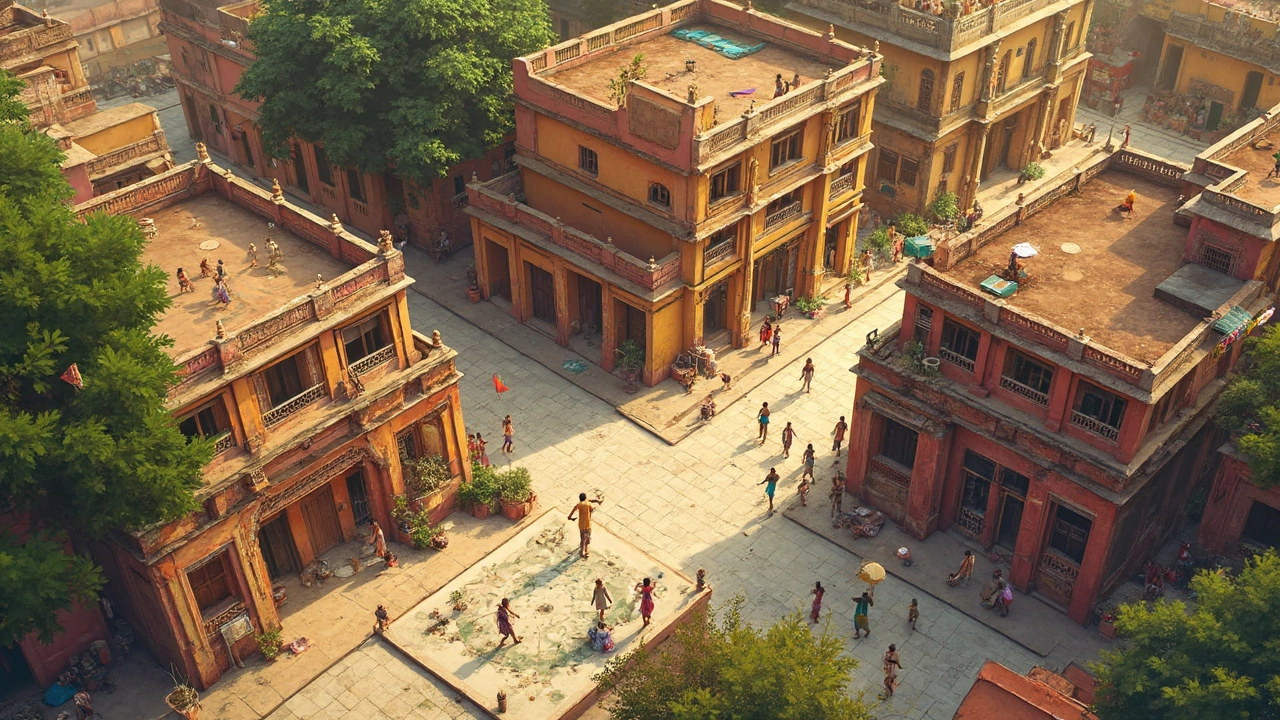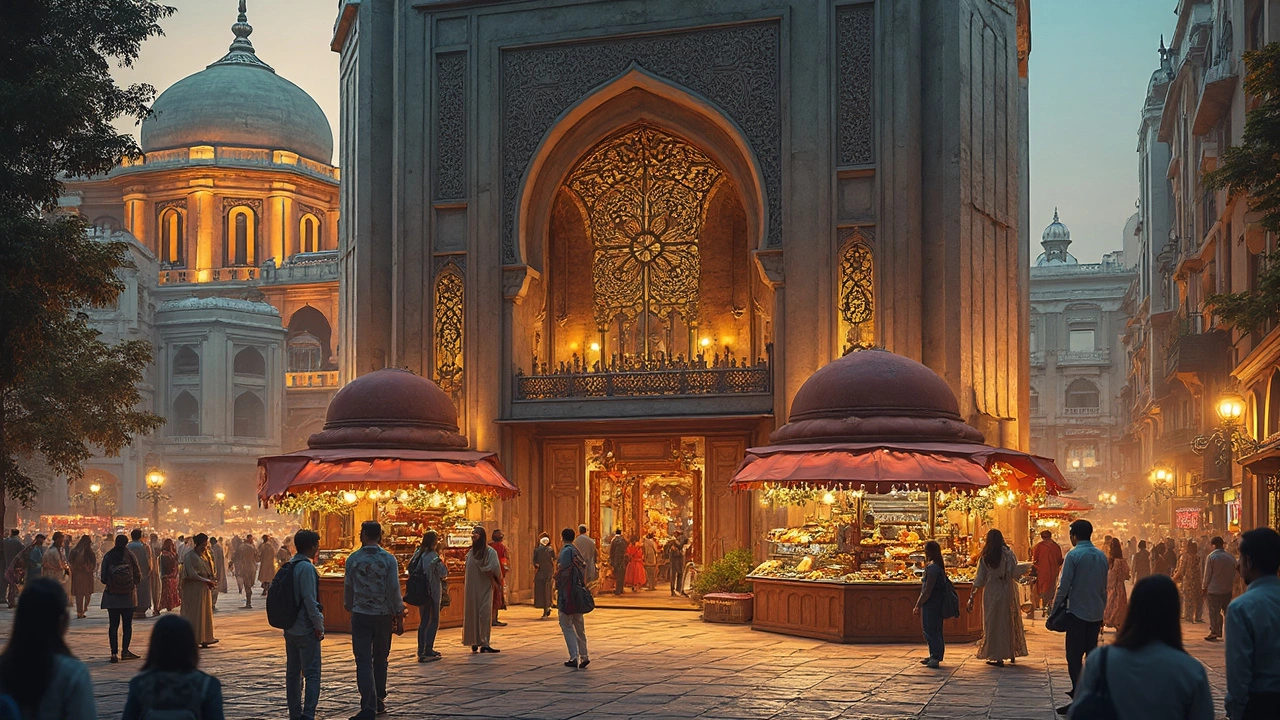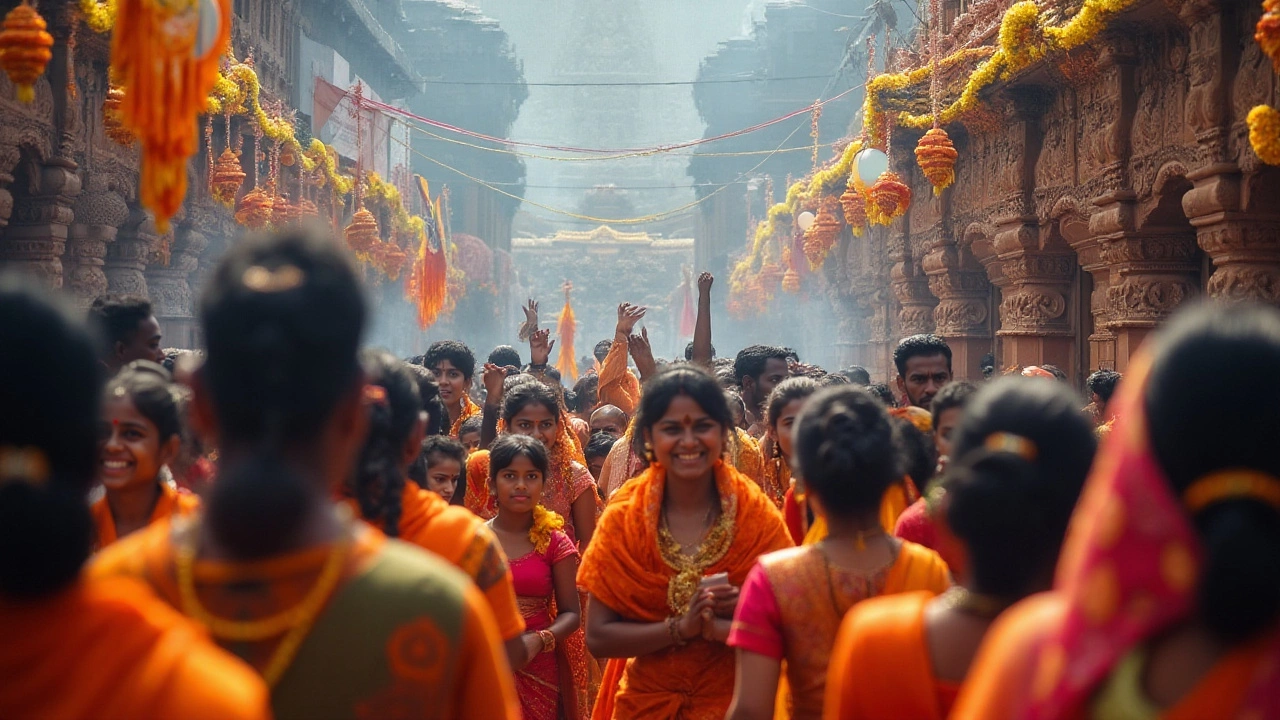Heritage City of India: Why Ahmedabad Stands Out

A lot of people think heritage is all about dusty palaces and bored guides. But that’s not what Ahmedabad is about. In 2017, Ahmedabad bagged the title of India’s first UNESCO World Heritage City—and honestly, you’ll see why the moment you step into its old quarters.
This place didn’t win the crown just because it’s old. It’s about living history. You’ll find narrow lanes called ‘pols,’ hand-carved wooden houses stacked close together, stepwells that look straight out of a fantasy novel, and markets that never seem to sleep. Add in the unique mix of Hindu, Islamic, and Jain architecture—sometimes on the same street—and you’ve got a city that refuses to be put in a box.
If you ever get tired of the typical tourist routine, Ahmedabad shakes things up. You could be sipping a cup of masala chai in a 300-year-old haveli or watching locals bring thousand-year-old rituals to life at a riverside ghat. Me? The last time my wife and I visited, we stumbled into a kite festival that had the whole sky buzzing with color. Seriously, there’s always something you didn’t expect—just around the next corner.
- Ahmedabad’s UNESCO Heritage Status
- Stories Etched in Stone: Key Monuments
- What Makes Ahmedabad Tick: Local Culture
- Hidden Corners: Beyond the Guidebooks
- Exploring the Heritage City: Tips & Shortcuts
Ahmedabad’s UNESCO Heritage Status
Ahmedabad hit the global map in 2017 when it became the first Indian city to be recognized as a heritage city by UNESCO. That’s not just cool for bragging rights––this stamp of approval came after years of effort highlighting the city’s unique vibe and story. UNESCO gave Ahmedabad this title because it’s not just stuck in the past. It’s a city where historic mosques, temples, old havelis, and centuries-old markets are packed into a living, breathing neighborhood.
What clinched the deal? It’s the blend of traditions, architecture, and urban design you won’t see anywhere else. The ‘pol’ system—a tight-knit neighborhood layout unique to Ahmedabad—keeps history alive. Each ‘pol’ is almost a city within a city, usually with its own temple, meeting space, secret passages, and a surprising sense of community. You can trace these networks back to at least the 15th century.
UNESCO didn’t just look at pretty buildings. They checked for diversity, how well the old was preserved, and whether locals still own and care for heritage houses. In Ahmedabad, families live in centuries-old homes, maintain traditional facades, and run iconic businesses from tiny shops that have seen it all—earthquakes, famines, British rule, and independence parades.
Here’s something that flies under the radar: the city’s heritage committee has rules in place to stop high-rises from popping up in the old city and spoiling the skyline. It’s not just about holding on to the past for the sake of it—this lets people experience the real deal instead of a Disney-style imitation.
If you’re planning a trip, check out UNESCO’s list of must-visit sites like the Jama Masjid, Sidi Saiyyed Mosque, and Bhadra Fort. These aren’t just tourist spots—they’re still used by locals every day. That’s what makes Ahmedabad different: the city lives its heritage, instead of just framing it for visitors.
Stories Etched in Stone: Key Monuments
Ahmedabad isn’t just a collection of old stones—it’s a city where every wall whispers a different story. If you want to know why UNESCO picked this place, start with its key monuments. They’re not just photogenic; they show off the mash-up of cultures that makes Ahmedabad unique.
First up, the Bhadra Fort isn’t just a dusty relic in the middle of the city. Built in 1411, it’s one of the oldest buildings around. Step inside and you’ll see what old-school royal life was like, with arches and intricate windows. Right next to it stands the Teen Darwaza, a triple-arched gateway. Here’s something wild—a lamp has been continuously burning at Teen Darwaza for over 600 years, cared for by a Muslim family as a mark of Hindu-Muslim unity.
Then there’s the Jama Masjid, one of India’s biggest mosques. Finished in 1424, it has 260 pillars and was designed so well that sunlight fills it with a golden glow every afternoon. The stepwells—or ‘vavs’ as locals call them—like the Dada Harir Vav, are genius designs from the 15th century, giving people cool hangouts even when it’s 45°C outside. Carved into the stone, the patterns double as art and ancient air-conditioning.
Don’t skip the Sidi Saiyyed Mosque. Its stone lattice windows (the ‘jalis’) look almost impossible—they’re so detailed you’d think they were woven from silk, not carved from stone. It’s the kind of place architecture students drool over, and the famous ‘Tree of Life’ window has pretty much become Ahmedabad’s unofficial logo.
- Sabarmati Ashram: Gandhi’s former home; base for the non-violent movement, open 8:30 am to 6:30 pm daily.
- Swaminarayan Temple Kalupur: Built in 1822, packed with color and wooden carvings—free entry for all.
| Monument | Year Built | Main Feature |
|---|---|---|
| Bhadra Fort | 1411 | Royal palace, Teen Darwaza nearby |
| Jama Masjid | 1424 | 260 pillars, fusion of Hindu and Islamic design |
| Sidi Saiyyed Mosque | 1573 | Intricate stone latticework |
| Sabarmati Ashram | 1917 | Gandhi’s residence & museum |
| Dada Harir Vav | 1499 | Underground stepwell, carved pillars |
What you get with these spots isn't just history classes—it's real proof that Ahmedabad earned its title as the heritage city of India. When you walk between these stones, it’s not hard to imagine all the lives and cultures that clashed, mingled, and left a mark here.

What Makes Ahmedabad Tick: Local Culture
If you really want to know what sets Ahmedabad apart, it’s not just the monuments—it’s how the people bring those spaces to life every single day. The city doesn't slow down. There’s a pulse here: markets bustling from dawn, locals heading out for steaming fafda and jalebi for breakfast (don’t knock it till you try it), and every festival turning streets into open-air parties.
Step into Manek Chowk after dark and you’ll see what I mean. By day, it's a jewelry market. By night, it turns into one of the biggest street food hubs in the country. The way locals flip between business and snacks in the same spot—no transition time needed—is pure Ahmedabad. And during Uttarayan, the famed kite festival every January, millions of colorful kites fill the sky. For a full 48 hours, people barely sleep.
Religion blends in a pretty unique way here. You’ll find centuries-old temples and mosques within a stone’s throw of each other. The city’s Jain community is one of the oldest and most active in India. Their stunning temples are local gems—check out the Hutheesing Jain Temple if you get the chance.
The city's culture is big on crafts—bandhani (tie-dye) fabrics, colorful block prints, and intricate woodwork fill the bazaars. You’ll spot artisans working out in the open, often happy to let you watch up close. Don’t feel shy to ask questions; people here tend to love showing off their skills.
| Cultural Event | What Happens | Best Time to Visit |
|---|---|---|
| Uttarayan (Kite Festival) | Millions of kites fill the sky, rooftop parties everywhere | January 14th |
| Navratri | Nine nights of non-stop dance, music, and traditional outfits | September/October (dates vary) |
| Manek Chowk Night Market | Street food stalls open late, best snacks in town | Every night |
Need a quick tip? If you’re on the hunt for excitement that feels truly local, try showing up during any festival. The city’s full of energy and it’s contagious. For anyone chasing the best of heritage city life in India, living the culture—not just seeing the sites—is the real game changer.
Hidden Corners: Beyond the Guidebooks
If you only stick to famous spots like the Sabarmati Ashram, you’ll miss what really gives Ahmedabad its soul. The real treasures hide in plain sight, tucked inside back streets or just outside the usual tourist circuit. Here are some seriously underrated places that locals swear by—and most visitors skip.
- Manek Chowk at Midnight: Not just a diamond market by day—by night, this open square turns into a wild food street. You can munch on butter-laden ghughra sandwiches or share an infamous "chocolate cheese sandwich" until 2 a.m. Feels illegal, but it isn’t.
- Dada Harir Stepwell: Built in 1499, this five-story deep stepwell sits in Asarwa, about a 15-minute auto ride from the old city. Its spiral staircases and stone latticework are crazy impressive. Plus, barely any tourists.
- The Calico Museum of Textiles: Guided tours get booked weeks ahead, but if you love stories behind fabrics and patterns, it’s worth it. The museum holds everything from Mughal carpets to tribal costumes, and it’s housed in a stunning traditional haveli.
- Jhulta Minar (Shaking Minarets): These minarets at the Sidi Bashir Mosque have a weird party trick: shake one, and the other vibrates too. No one fully knows how it works, not even the engineers who’ve poked around inside them.
- Pols of Khadia and Kalupur: The ‘pols’—tight-knit neighborhood clusters—are where you’ll see painted doors, secret bird feeders, and houses older than your grandma’s grandma. Some still run daily communal bird feeding rituals, called "chabutras," that go back centuries.
- Rani no Hajiro Market: Behind the Jama Masjid, this bustling bazaar is run almost entirely by women. It’s famous for traditional jewelry and fabrics, and you can actually watch craftspeople at work on the spot.
Here’s a look at how some of these spots stack up, especially compared to the "big name" sights:
| Spot | Year Founded | Average Visitors/Day | Main Draw |
|---|---|---|---|
| Manek Chowk | 1400s | 3,000+ | Street Food, Diamond Trade |
| Dada Harir Stepwell | 1499 | 200 | Stone Architecture, Quiet Atmosphere |
| Calico Museum | 1949 | 50 | Historic Textiles, Private Tours |
| Jhulta Minar | 1461 | 120 | Shaking Minarets Trick |
The cool part? Exploring these lesser-known places is still super easy. Public transport like metro, rickshaws, and app-based taxis can get you anywhere. And lots of these corners are totally free or cost next to nothing to visit.
So next time someone asks you about Ahmedabad, don’t just mention the famous ashram or mosques. Drop these ‘hidden corners’ into the chat, and you’ll sound like a true insider. That’s the real side of a heritage city.

Exploring the Heritage City: Tips & Shortcuts
Getting around Ahmedabad’s heritage hotspots is way more fun if you don’t stick to the worn-out tourist paths. Locals swear by a few shortcuts—literally and figuratively. Most of the must-see spots are packed into the old city core, so walking works best here. Rickshaws are everywhere, but try a guided heritage walk first. The Ahmedabad Municipal Corporation actually organizes one every morning, starting at 8 AM from the Swaminarayan Temple in Kalupur. It lasts about two hours and covers the classic pols, hidden Jain temples, and the famous Manek Chowk market.
The pols are compact, so skip taxis for these old quarters. Trust your feet and don’t be afraid to get a bit lost—the best discoveries honestly happen that way. Plus, you’ll stumble across crazy street art, tiny snack stalls selling khakhra and fafda, and maybe an uncle who insists you try his chai.
Eating local is a must. Manek Chowk flips from a jewelry bazaar by day to a late-night street food paradise. Try the ghee-drenched dal wada or a giant sandwich that’s basically ten layers of every filling you can think of—don’t think about calories here. If you’re into history, the Sidi Saiyyed Mosque and Jama Masjid are iconic and within a 15-minute walk of each other.
- Heritage city tip: Visit Sabarmati Ashram early to beat crowds, and bring a reusable water bottle—Ahmedabad gets super hot from March to June.
- Stick to the evening hours if you want to experience local life in full swing—markets, prayers, and all sorts of city buzz peak after 6 PM.
- If you need a lift, use the Ahmedabad BRTS (bus system). It’s reliable and dirt cheap compared to cabs.
- Download the city’s heritage walk map from the AMC website—super helpful for self-guided wanders.
- Keep small cash handy. Lots of local spots don’t take cards, especially in the old city.
Here’s a quick info-table to save you hassles:
| Spot | Best Time to Visit | Travel Tip |
|---|---|---|
| Manek Chowk | 8 PM - Midnight | Perfect for street food, go hungry |
| Sabarmati Ashram | Early Morning | Arrive before 9 AM for peace & less heat |
| Jama Masjid | 10 AM - 12 PM | Dress modestly, shoes off inside |
| Pols & Heritage Walk | 8 AM (official tour) | Wear comfy shoes! |
| Sidi Saiyyed Mosque | Late Afternoon | Catch the famous tree-of-life window in good light |
If you’re short on time, focus on a heritage walk, Manek Chowk at night, and Sabarmati Ashram. Those three pretty much give you the city’s whole spirit—history, food, and Gandhian calm, all in one day.

